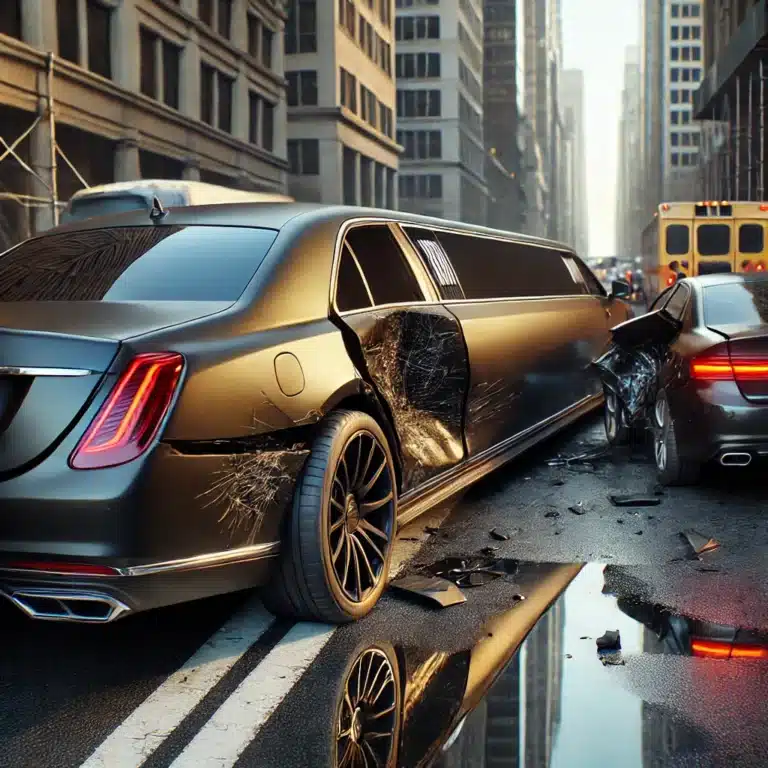10 Essential Facts About Property Damage Liability Insurance
Introduction
Property damage liability insurance is a crucial aspect of auto coverage that protects policyholders from financial losses when they are responsible for damaging someone else’s property. Whether you’re a first-time car owner or an experienced driver looking to refine your coverage, understanding this insurance type is essential. Here are ten important facts about property damage liability insurance.
Imagine a scenario where a limo chauffeur driving a company car loses control and crashes into a building, causing significant structural damage and risking costly liability claims. Property damage liability insurance is a crucial aspect of auto coverage that protects policyholders from financial losses when they are responsible for damaging someone else’s property. Whether you’re managing a fleet of vehicles or driving one yourself, understanding this insurance type is essential. Here are ten important facts about property damage liability insurance.
Key Takeaways
- This type of insurance is essential and often legally required.
- It covers damages to others’ property, not your own vehicle.
- Minimum coverage limits may not be sufficient for serious accidents.
- Additional policies like umbrella insurance provide extra protection.
- Business owners need commercial coverage for work-related vehicle use.
- Higher coverage limits reduce personal financial risk.
- Premiums depend on various factors, including driving history and location.
- Legal defense costs may be covered in case of lawsuits.
- Comparing policies helps find the best coverage at affordable rates.
- Regularly reviewing your policy ensures continued protection.
1. What Is Property Damage Liability Insurance?
Property damage liability insurance covers the costs of repairing or replacing another person’s property (typically their vehicle) when you’re at fault in an accident. It does not cover damage to your own car.
2. It’s Required in Most States
Most states in the U.S. mandate a minimum level of property damage liability insurance. Failing to carry this coverage could result in fines, license suspension, or other penalties.
3. Coverage Limits Vary
Property damage liability insurance has coverage limits, which are often expressed as part of a three-number liability coverage policy (e.g., 50/100/50). The last number represents the maximum amount your insurer will pay for property damage per accident.
4. It’s Different from Collision Coverage
Unlike collision coverage, which pays for repairs to your own vehicle, property damage liability only covers damages to other people’s property, such as cars, buildings, fences, or lamp posts.
5. Higher Limits Provide More Protection
While states set minimum requirements, it’s often wise to choose higher coverage limits to protect against expensive damages. The cost of a single accident can easily exceed minimum coverage limits, leaving you personally liable.
6. It Can Cover Legal Fees
If you’re sued for damaging a building that resulted from an accident, your property damage liability insurance may help cover legal defense costs, settlements, or judgments.
7. Commercial Vehicles Need Special Coverage
If you drive a vehicle for business purposes, you may need a commercial auto insurance policy with property damage liability coverage. Personal auto insurance policies typically do not cover business-related accidents.
8. Umbrella Insurance Can Provide Additional Protection
For individuals or businesses requiring higher coverage limits, a commercial umbrella policy can extend beyond the limits of property damage liability insurance. This additional coverage helps protect against significant financial losses.
9. Premium Costs Depend on Several Factors
Your premium is influenced by factors such as your driving history, location, coverage limits, and the insurer’s risk assessment. Drivers with clean records often receive lower rates.
10. Review Your Policy Regularly
Insurance needs change over time. Reviewing your policy annually ensures that you have adequate coverage based on your current circumstances and risk exposure.
Case Study: How Proper Coverage Saved a Business Owner
Tomasz Nowak, a small business owner in Chicago, found himself in a challenging situation when one of his company’s delivery trucks accidentally damaged a storefront. Thankfully, his liability insurance covered the $50,000 in repair costs, preventing financial strain on his business. Without adequate coverage, Tomasz could have faced a significant out-of-pocket expense and potential legal issues.
FAQs
1. Does a commercial umbrella policy cover property damage?
Yes, a commercial umbrella policy extends the coverage of your underlying liability policies, including property damage liability.
2. What is the difference between general liability and commercial umbrella insurance?
General liability insurance provides standard protection for property damage and bodily injury claims, whereas a commercial umbrella policy offers additional coverage beyond standard policy limits.
3. What is not covered by an umbrella policy from Progressive?
While umbrella policies provide extensive coverage, they typically do not cover intentional acts, contractual liabilities, or professional errors.
4. What does commercial liability insurance not cover?
Commercial liability insurance generally does not cover intentional damages, employee injuries (covered by workers’ compensation), and personal property of the business owner.
Additional Considerations
- State-Specific Requirements: Some states require higher coverage limits than others.
- Impact on Premiums: Higher limits increase premiums, but they also offer better protection.
- Bundling Options: Many insurers offer discounts for bundling liability coverage with other policies.
- Exclusions in Policies: Not all damages may be covered—check exclusions carefully.
- Claims Process: Understand how to file a claim efficiently.
- Risk Reduction Strategies: Safe driving and defensive techniques lower insurance costs.
- Policy Renewal Considerations: Regularly update coverage based on vehicle or business changes.
- Effect on Business Reputation: Adequate insurance coverage helps maintain credibility in commercial settings.
- Role of Deductibles: Choosing the right deductible affects policy affordability.
- Alternative Coverage Options: Some drivers opt for additional protection, such as gap insurance.
Conclusion
Understanding property damage liability insurance can help you make informed decisions about your coverage needs. Whether you’re a personal driver or a business owner, ensuring adequate protection safeguards your finances and legal standing.
Have questions? Share your thoughts in the form below for immediate response or contact us here.
References
Government References
- U.S. Department of Transportation (DOT)
Visit: https://www.transportation.gov/ - California Department of Insurance
Visit: https://www.insurance.ca.gov/
Industry References
- Insurance Information Institute (III)
Visit: https://www.iii.org/ - National Association of Insurance Commissioners (NAIC)
Visit: https://www.naic.org/


